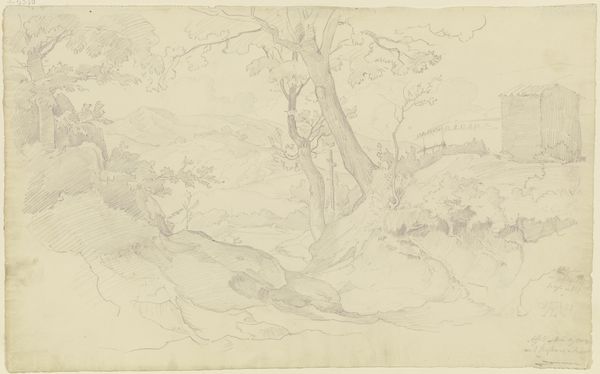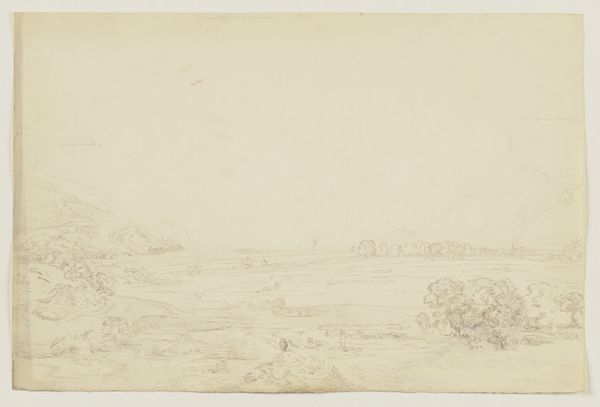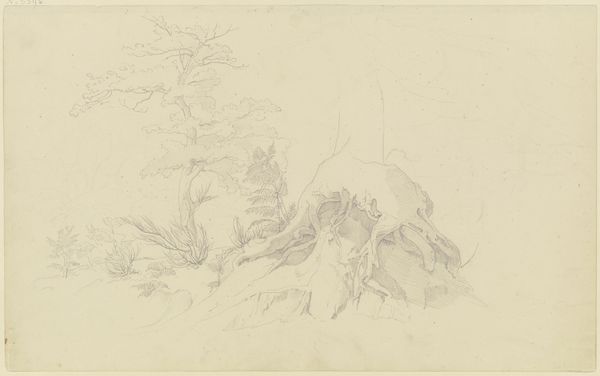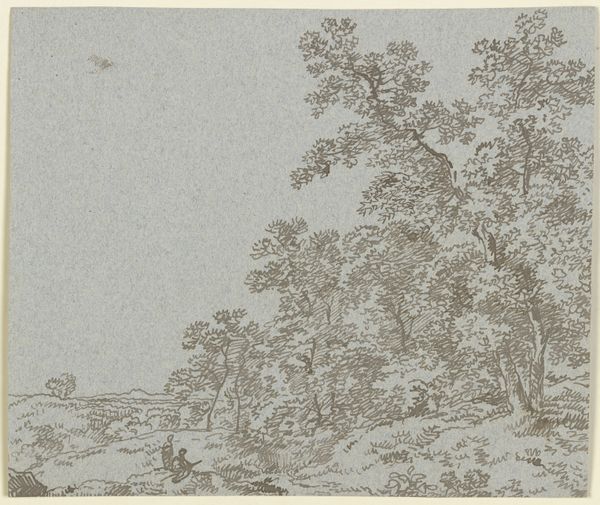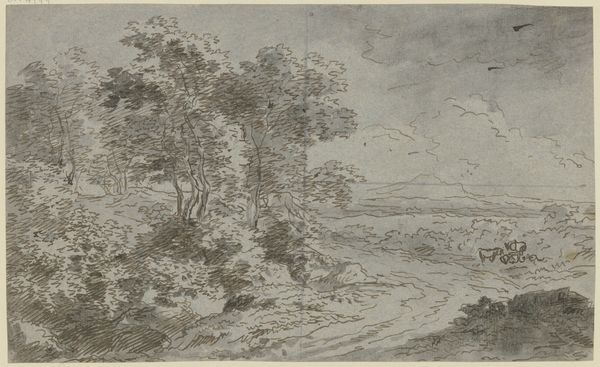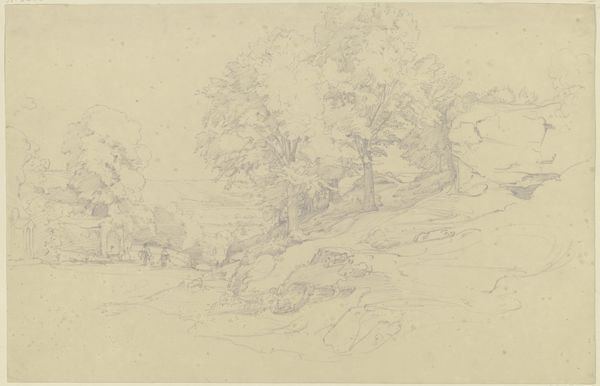
Copyright: Public Domain
Editor: Here we have August Lucas’s “Near Olevano, in the Middle Ground, Two Shepherds with Herd,” from July 1830, a pencil drawing housed at the Städel Museum. It feels unfinished, almost a study... what catches your eye about it? Curator: What strikes me is the labor embedded in this landscape. Consider the artist meticulously rendering each tree and rock with a simple pencil. It speaks to the romantic idealization of the shepherd’s simple life, yet produced through the hard labor of the artist's hand. The medium is ordinary and easily sourced, but what statement does this artist’s choice create? Editor: Well, it makes it more accessible, maybe? Less…precious than oil paint? Like a common person's view, even though the execution is skilled. Curator: Precisely! And the landscape itself becomes a commodity. Artists like Lucas were part of a system producing views, souvenirs almost, for a burgeoning tourist industry. The shepherd and his flock, picturesque as they are, become elements in a commercial transaction. Do you see this subtle industrialization happening? Editor: That's fascinating! So it's not just a pretty landscape, it's a product of its time, shaped by economic forces. It is kind of reproducible if he chooses to replicate it. Curator: Indeed. And the act of drawing, the labor, connects Lucas directly to the socio-economic context of early 19th century Romanticism, challenging our notions of artistic genius and individual creativity. Consider that many drawings like this were done "en plein air", outdoors at the very site. Editor: I hadn't thought about it that way at all. It's incredible how a simple drawing can reveal so much about its historical moment and about how the artist wanted us to consume it. Curator: It shows us the beauty lies not only in the scene depicted but also in understanding the complex web of production and consumption that made its creation possible. This connects labor to materiality!
Comments
No comments
Be the first to comment and join the conversation on the ultimate creative platform.

